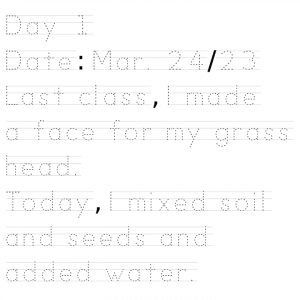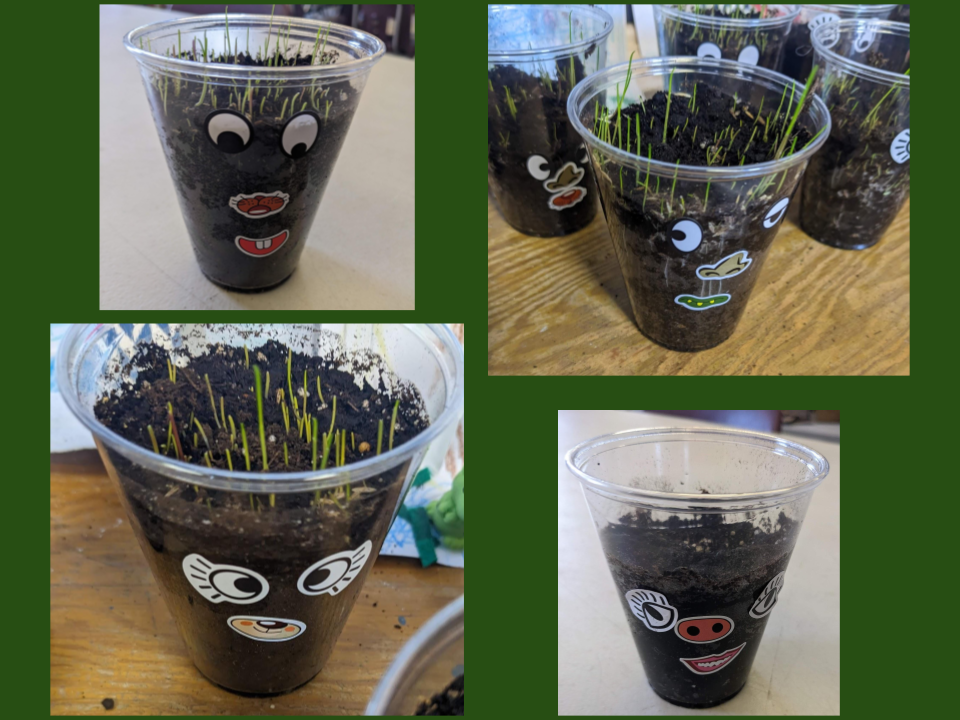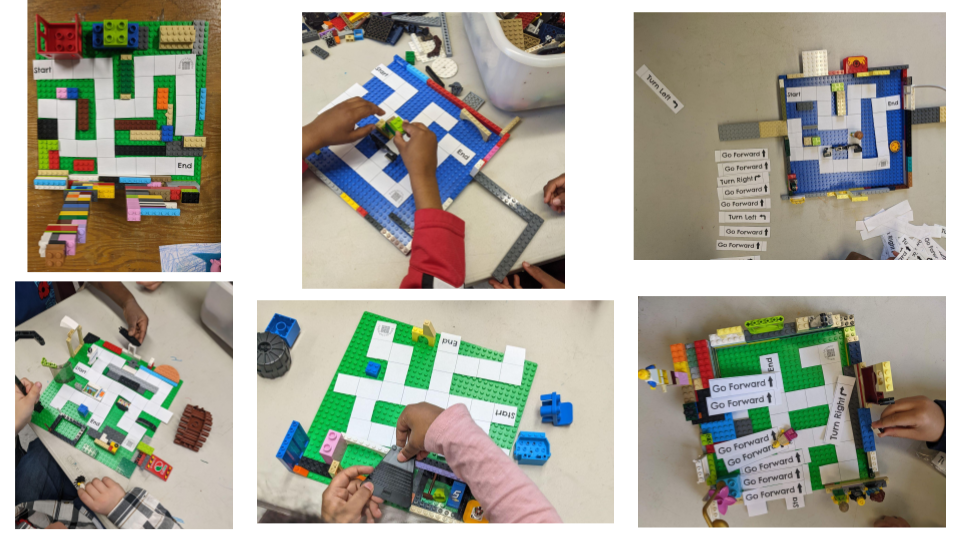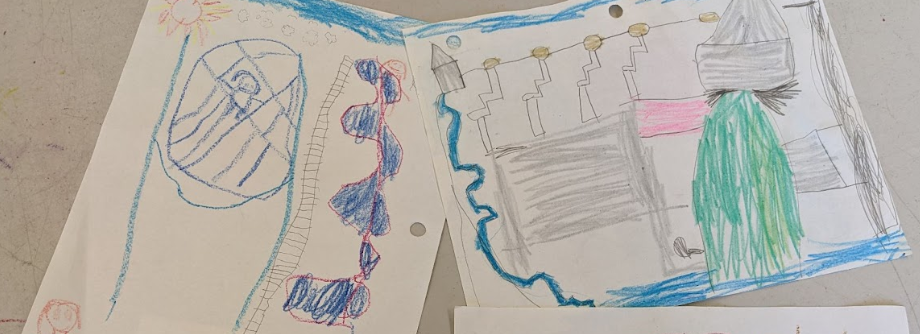After what has felt like a long, cold winter, I think it’s safe to say that spring has sprung. Well, at least in our classroom! The kindergarten students have been hard at work learning about plants and what they need to grow. We’ve even started growing our own grass heads. We’re pretty excited about it!
During the first week back after the break, we were talking all about spring and we were also building. Students used Lego to build something that reminded them of the season. Many students built gardens that were full of interesting flowers and animals. They were quite beautiful and this sparked some of our conversations about all the changes that we expect to see over the next few weeks.
After seeing all of the beautiful Lego gardens and I must admit that I have quite a love for plants, we thought it might be great to try our hand at a little gardening. Using some eye, nose and mouth stickers, students were tasked with creating a face for their grass head. Once they added the faces, cups were filled with soil and they began drawing and writing in their journals about what their grass heads would need to grow. Now, I think that I mentioned before that I’m relatively new to kindergarten so it was definitely interesting to see students trying to copy off the whiteboard. EEK! I can’t say enough how grateful I am to work with and learn from two amazing ECEs! Of course, they were there to the rescue and showed me that some students required more support and that tracing might be a way to get them to practice forming their letters. I tucked this one away for our next class together.
 Time truly flies when you are having fun. During our first class, we were able to prepare our cups but the fun came during our second class when we had the chance to mix our soil and grass seeds and add water. Let me tell you how excited the students were. Little fingers got mixing seeds in soil as students were reminded that we needed soil, water, sun and seeds to make their grass heads grow. During this class, we also wrote the first entry in our observation journal and this time, we were able to do some tracing. Students also had the opportunity to draw a picture of what they observed. I asked students to make predictions on how long it would take to see the grass grow and we got answers anywhere from the next day to two weeks. This was on a Friday and imagine my surprise on a Monday morning when I started to see some little green bits popping out of some of the soil.
Time truly flies when you are having fun. During our first class, we were able to prepare our cups but the fun came during our second class when we had the chance to mix our soil and grass seeds and add water. Let me tell you how excited the students were. Little fingers got mixing seeds in soil as students were reminded that we needed soil, water, sun and seeds to make their grass heads grow. During this class, we also wrote the first entry in our observation journal and this time, we were able to do some tracing. Students also had the opportunity to draw a picture of what they observed. I asked students to make predictions on how long it would take to see the grass grow and we got answers anywhere from the next day to two weeks. This was on a Friday and imagine my surprise on a Monday morning when I started to see some little green bits popping out of some of the soil.
We haven’t yet had a class together this week but I’ve had a few visitors come up to water and I’ve taken down some of our grass heads for students to see their growth. They are amazed that they started growing so soon and that some already have a lot of “hair”. Yesterday, one student noticed that in some cups, the grass is growing really long roots. On Friday when we meet again, we’ll start to measure our grass and we’ll continue to record our observations. I wonder at what point our grass heads will need a trim!





